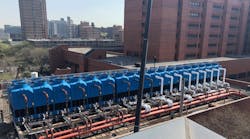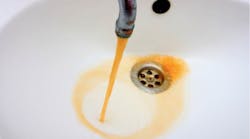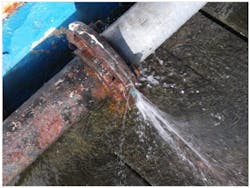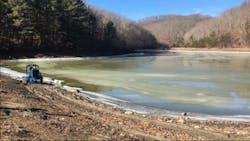In January 2016, I wrote about the Flint, MI, water crisis nearly a week before the same story made the cover of a national news magazine. I followed up 18 months later, addressing not just Michigan’s, but America’s water crisis. Unfortunately, although things are a bit better in Flint now, as a nation we have not made a great deal of progress. Of course, we are still much better off than the estimated 780 million people in the world who do not have access to a clean water source.
Most or all of the talk in Washington DC about improving the country’s infrastructure, and the recently proposed $1.5-trillion federal spending plan, focus on roads, bridges, highways, railways, and waterways… NOT on water pipes. But in many places, particularly smaller and usually poorer rural communities, water distribution systems are a major health concern. Last January – on the two-year anniversary of the federal emergency declaration in Flint – Martin County, KY, declared a state of emergency due to widespread water outages.
Martin is a sparsely-populated (some 13,000 residents, per the 2010 census) rural Appalachia county, where unemployment is very high, the median household income is $18,279, and 37% of the population is below the poverty line. The county had suffered from water outages for weeks prior to the emergency declaration and has been plagued with serious water quality problems for decades. According to Jenny Jarvie, writing this month for the Los Angeles Times from Inez, the county seat of Martin County, sometimes there is just a trickle from the faucets, if any water flows at all, and it may be so discolored that it resembles milk or Kool-Aid or beer. And, since Martin County is a dry county (in more ways than one), even buying beer is not an option for thirsty residents.
This winter, when the Martin County Water District – dubbed the “worst water district” in Kentucky by some officials – shut off flow to more than a 1,000 residents for days, because a pump and pipes had frozen during severely cold weather, a state of emergency was finally declared. Local schools were closed for three days, volunteers distributed bottled water to the ill and elderly, and many residents boiled rainwater and melted snow. But the aging, cracked, and leaking water infrastructure is not Martin County’s only problem. The county’s water resources had been polluted by a coal sludge spill nearly 20 years ago, and the treated water has violated EPA safe drinking water standards dozens of times in the past few years, most often for excessive levels of disinfectants. Even if the water can be properly treated, the distribution system to safely deliver it to residents just doesn’t exist.
The District’s answer? A proposed rate increase of 49.5 percent, that would add $237 a year (16% of the local median income!) to a typical household’s water bill. Not surprisingly, on February 13, the Martin County Water District’s business manager abruptly retired, less than a month after warnings that the district was facing imminent collapse unless regulators approved the proposed rate hike.
Lest those of us who enjoy safe and reliable public water supplies get too smug, be aware that the drinking water we provide to our schools has also come under recent scrutiny. Click here to learn what Christina Hecht, PhD, Senior Policy Advisor at the Nutrition Policy Institute, University of California, has to say about the importance of providing access to safe, quality drinking water in schools.
Our industry designs, manufactures, installs, and services a lot of (potable and non-potable) water-consuming equipment. Please let your elected officials know that you care about providing safe and reliable drinking water to all Americans.
A regular contributor to HPAC Engineering and a member of its editorial advisory board, the author is a principal at Sustainable Performance Solutions LLC, a south Florida-based engineering firm focusing on energy and sustainability. He can be reached at [email protected].











